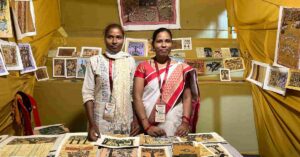Uttarakhand’s ‘Aipan Girl’ Revives Traditional Himalayan Art, Provides Jobs to Women
Minakshi Khati started Minakriti: The Aipan Project in 2019 to revive the dying art form in Uttarakhand and all over India as well.
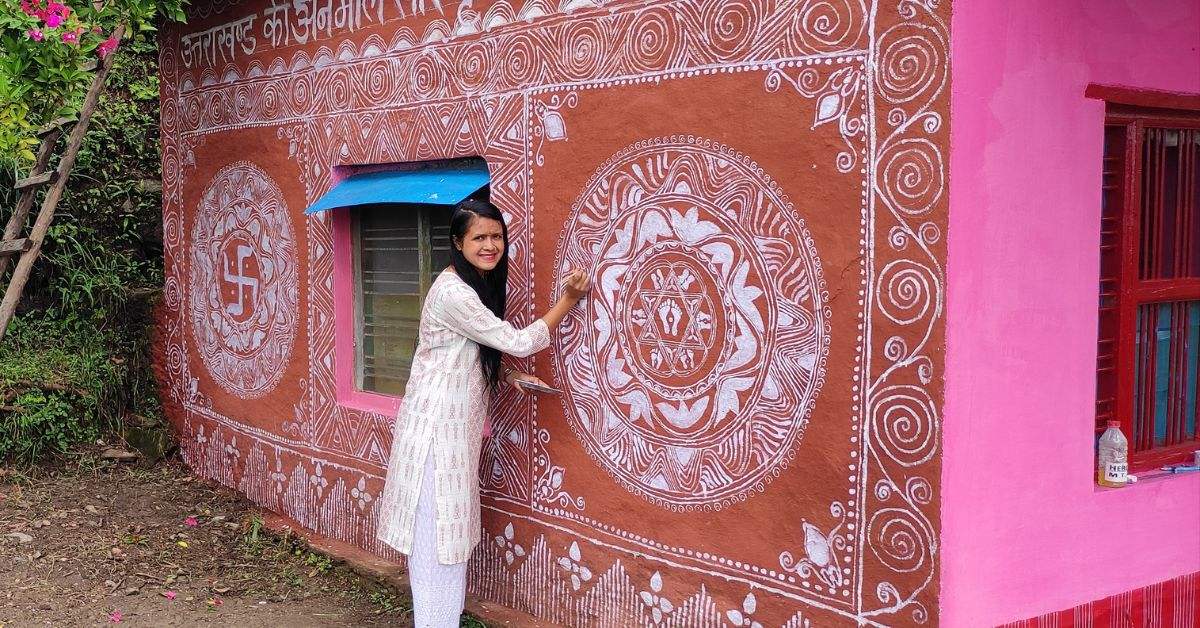
You may have come across white drawings of conch shells, flowers, footsteps of goddesses, etc, drawn against a characteristic red background.
This ritualistic folk art is synonymous with the Kumaon region of Uttarakhand and is known as aipan art. While the patterns of drawings have evolved in recent years, traditional aipan art was heavily focused on objects of nature and geometric designs.
A decade ago, the Kumaon region would boast of this form of art with the empty walls decked in red and white designs and the festive seasons incomplete without it. However the same cannot be said for today.
The sightings have become fewer and the tradition of the aipan is rarer.
So when Minakshi Khati, a 24-year-old artist, made this observation while she was in college, she wanted to change the status quo.
“I wanted to bring back the traditional aipan, which is the pride of Uttrakhand, and retain its cultural significance,” she says to The Better India. But she adds that to revive something, one must understand its importance in the first place.
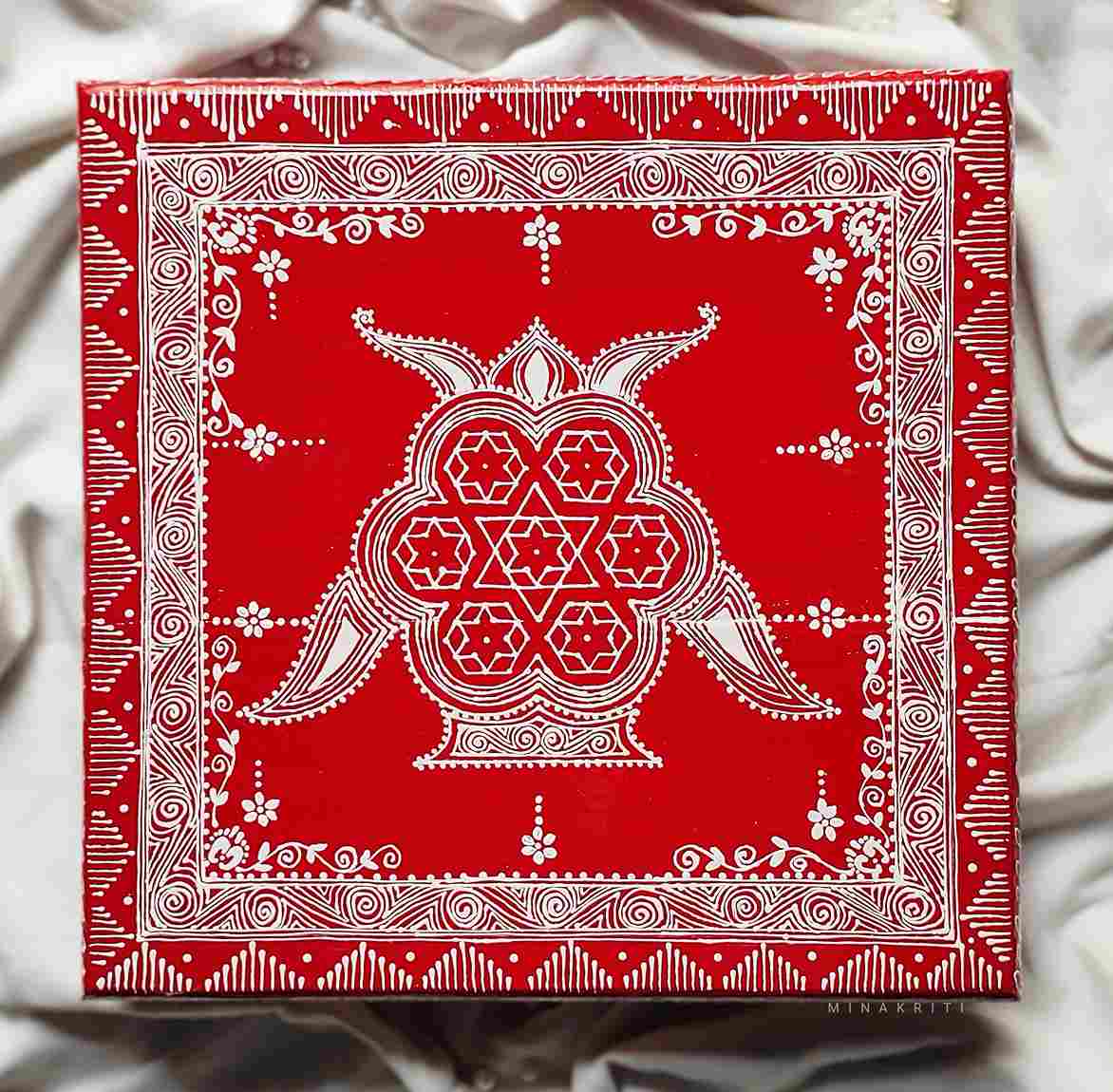
What is aipan art?
Derived from the word ‘arpan’, which translates to ‘writing’, the aipan art is done by using the last three fingers of the right hand.
A paste is made from rice and the desired patterns are then traced onto the red background. Usually done on empty walls, courtyards of the home and temples, the art is also synonymous with the festive season as it holds that the patterns are a way of invoking the divine and keeping evil spirits at bay.
Growing up, Minakshi would hear of this as well as observe the art being predominant in her state.
“Grandmothers would pass the tradition on to their daughters and they would pass it on to their daughters, thus continuing the cycle. It was a generational art form,” recounts Minakshi, adding that as a kid she would often trace patterns with the rice paste with her grandmother and mother.
But in the years to come, this changed.
“As I grew up I began to notice how the art form began to get rarer, not just in families, but even in social contexts,” she says. To this, she adds that ironically, while the birth state of aipan art was losing touch with it, other states loved it and held it in high esteem.

This was a gap that Minakshi was intent on bridging, and once she had completed her Bachelor’s in Science, she started Minakriti: The Aipan Project in 2019, as a way of giving the art form its due recognition while doing this, also providing jobs to the local women.
Popularising aipan art once again
But, as she says, there was a lot of learning to be done.
“Since this is a traditional art form, I needed to first understand the intricacies of it,” says Minakshi. “Sometimes I would wonder how I would learn all the finer nuances and manage to replicate it correctly.”
To broaden her understanding she began making frequent trips to Kumaon as the art form had originated here. “I would also engage in conversations with the elders in the village and the local women. As I slowly learnt, there are people in Uttarkhand who have devoted their time to studying the art form in great depth and have done intense research on it,” she says, adding that speaking to these people helped her understand the art form in a better way.
Once Minakshi felt she had learnt all there was to learn about aipan, she began conversing with the local women in Kumaon and gauging their interest in whether they would be interested in reviving this.
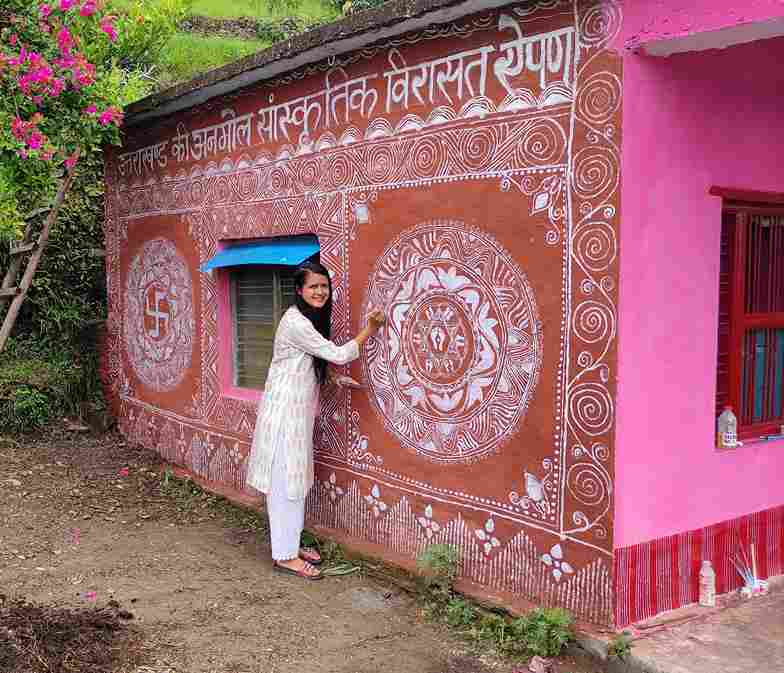
“We started with a few nameplates and wall hangings,” she says, adding that she posted pictures of these on social media, and was met with a great response.
Slowly, more women began showing an interest in making decor and earning through this.
Helping women earn through aipan
Today, Minakshi has 30 women who are associated with her venture and each of them she says earns Rs 5,000 to Rs 10,000 a month, depending upon how many orders they can complete.
Along with this, Minakshi and her team of six train children through workshops that they conduct at schools and colleges.
“I have trained around 20,000 children in aipan. These children are from schools in Dehradun, Haridwar, etc and if any of them are really interested in aipan and making decor items, I encourage them to do it and then connect them with customers I know of in those regions,” she says.
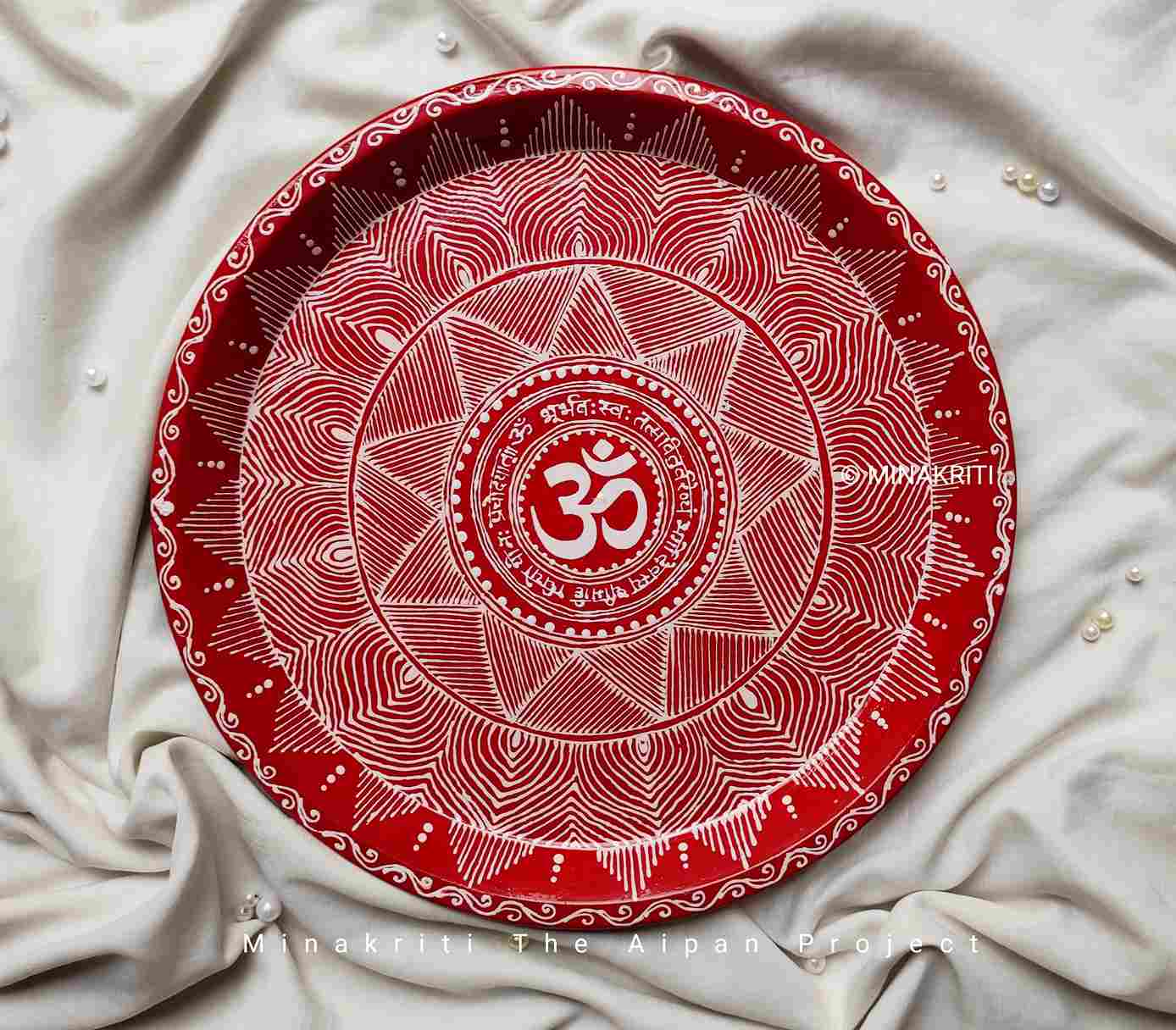
As for the women who work with Minakshi, they come to the centre in Ramnagar and pick up the raw materials and then do the work in their homes.
“The women work from their homes in the free time that they get, and I let them know the number of days that the order needs to be completed,” she says.
Among the products that the women make, there are name plates, coasters, showpieces, kettles, etc. During Diwali, there are puja thalis, torans, lotas for karva chauth, etc. The diyas are priced at Rs 20, while the rakhis are Rs 25, and the thalis are Rs 200.
One of the women Neelam, who has been associated with Meenakshi for the last couple of years says her experience has been great. “It isn’t simply about making the products but also about learning the cultural significance of the art and it is refreshing to make these decor items.”
Minakshi’s team comprises six people and while the orders that they receive depend upon the season time, she says in Diwali they got around “1,000 orders”.
But for Minakshi, she says the most amazing part is that through this venture people around Uttarakhand and the neighbouring states also know of aipan art.
“When I started out this was the biggest challenge I foresaw, on building a successful business model out of the art form.”
But now in retrospect, she says the effort was worth it. If you found our stories insightful, informative, or even just enjoyable, we invite you to consider making a voluntary payment to support the work we do at The Better India. Your contribution helps us continue producing quality content that educates, inspires, and drives positive change. Choose one of the payment options below for your contribution- By paying for the stories you value, you directly contribute to sustaining our efforts focused on making a difference in the world. Together, let’s ensure that impactful stories continue to be told and shared, enriching lives and communities alike. Thank you for your support. Here are some frequently asked questions you might find helpful to know why you are contributing?

Edited by Yoshita Rao
This story made me
- 97
- 121
- 89
- 167




